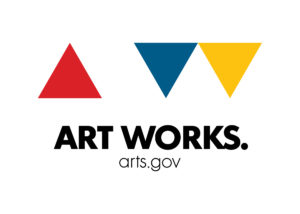By Matt Radcliff
At the June meeting of the WIFV/Docs In Progress Documentary Roundtable, our guest speaker was Meghan Shriver. Ms. Shriver is the Arts Insurance Manager for MDP, Inc. (Maury Donnelly & Parr, Inc.), an insurance broker based in Baltimore but with offices around the country and licensed to sell insurance in 50 states. They cover educational videos, training and corporate videos, documentaries, shorts, fiction films as well as film festivals and theater, ballet, and opera performances. Basically, they provide insurance for any type of art.
Meghan described the different types of insurance coverage a producer would need, and also what types of coverage a freelancer would need. Those types are general liability, equipment, worker’s compensation, and errors and omissions.
General liability is also known as “third-party coverage,” which you purchase to cover yourself, your LLC, your non-profit, or whatever “legal entity” you set up to handle your business. To get a film permit for a location in nearly any city, you will need to provide “proof of liability,” meaning proof that you have this type of insurance. It will cover nearly anything that you would be liable to fix if you damage: fixing the floors of a location if they get scratched, for example, or if someone trips over a power cord. Basically, anything that happens due to your negligence. Most jurisdictions don’t require more than one million dollars worth of coverage, and they often want to be listed as “additional insured.” That means they will get paid directly from the insurance company, rather than waiting for you to send them a check. When you set up the policy, make sure that it has a provision for “blanket additional insured,” so you don’t get charged extra for adding (and removing) names and places.
You can purchase general liability coverage for an entire year at a time, or just for a short term. It typically runs about $500 per year, depending on the scope. This would give you a max of $1 million per occurrence, and a total of $2 million total. If you get sued and need to go to court, the insurance company will pay for a lawyer. Sometimes the legal costs are included in the $1 million cap, sometimes it is not counted toward that limit. Meghan also pointed out that some insurance companies don’t cover drones, so make sure you check about that if you are using them.
Most insurance policies have an exception for “illegal acts” – if you are breaking the law, they aren’t required to pay for the claim. For instance, if you need a permit for a location but you don’t have one, they may not pay for a claim at that location. In what would be a recurring mantra, Meghan’s advice was “talk to your insurance agent to make sure you have the proper coverage.”
Often, regular general liability policies include Canada as well as the US. You would need to get a separate policy to cover “overseas,” which means any foreign country other than Canada. These policies are more expensive and include your liability as well as auto, worker’s compensation, and even kidnap and ransom insurance. However, insurers will not underwrite kidnap/ransom insurance for some countries. Check with your agent to make sure the country you are travelling to is covered.
The second type of insurance covers equipment, both rented and gear you own. These are sometimes known as “inland marine” policies. They are typically a “floater” policy, meaning your gear is covered wherever it is in the world. You don’t need to list individual items, just the total value. Rental companies will usually require proof that you have coverage in order to rent. Typically the coverage is for $50,000 and there is a $500 deductible, but that changes for incidents of theft, vandalism, and some other factors. These policies also cover you if you rent the equipment out to other people.
An often overlooked policy is Worker’s Compensation. You will sometimes need this if you rent a space to film. Often, filmmakers don’t have employees, and an insurance broker can’t sell coverage if there are no employees. You will need to push back against a location that you have no employees and therefore are not required to have worker’s compensation insurance.
Of course, the line between employee and independent contractor is a very fine line and we did not get into employment law during the program. Meghan’s advice was to have worker’s compensation even for independent contractors since it is there to cover the employee AND to protect the employer from being sued. If you are paying them, and they don’t have their own worker’s compensation policy, then you should be providing the coverage.
It is possible to get “volunteer accident insurance” to cover volunteers, even when they are travelling to and from the location.
A handful of states (Ohio, Washington, and a few others) mandate that the state is the insurer for worker’s comp. So in those states, you have to register with the state and pay them the premium. It only costs about $10 to set up and account, and then the full cost depends on the number of employees and payroll amount.
The last insurance type is “Errors and Omissions” coverage, similar in concept to medical malpractice or attorney’s liability. This is not needed while you are filming, but only when the film is being seen by audiences. E&O policies cover copyright infringement, title, fair use, anything that needs to be cleared, such as releases from people who appear in the film. (Verbal, on-camera releases are OK but make sure that those video clips are kept!)
E&O policies are project specific, so you would need to get separate policies for each film or project. They cost about $2,000 – $4,000 for a three-year period, and usually have a $1 million cap per each claim and a total of $3 million for the policy. The policies are often called “producer’s package” and cover screening and marketing the film. Sometimes distributors or broadcasters will offer to get the policy to cover the film, but that is not always the best idea. A policy that you purchase will cover you for all distributions of the film, but a policy that a distributor or broadcaster gets will usually cover just that outlet and you would need to get another policy for a different outlet.
There is a bit of a tricky situation regarding coverage of websites. If you are distributing or marketing the film through websites that other people control (i.e., YouTube, Hulu, Vimeo, iTunes, etc.) it qualifies as distribution and is covered by the standard “producer’s package.” But if you are distributing/marketing the film on a website that you control yourself, it falls under a separate “Internet Liability” and you need a separate policy for to cover this.
Freelancers also need insurance coverage. Meghan suggested it would be good for them to have general liability insurance, equipment coverage, and workmen’s compensation. Depending on what area they work in, the amount of coverage will be smaller or greater. Again, talk to your insurance agent to find out more. Additionally, screenwriters, playwrights, and novelists might want to get E&O insurance.














